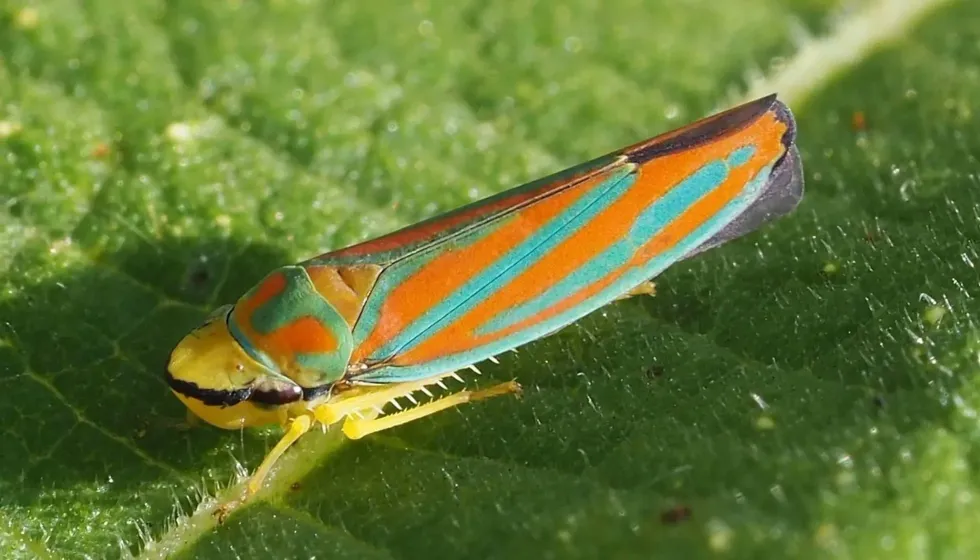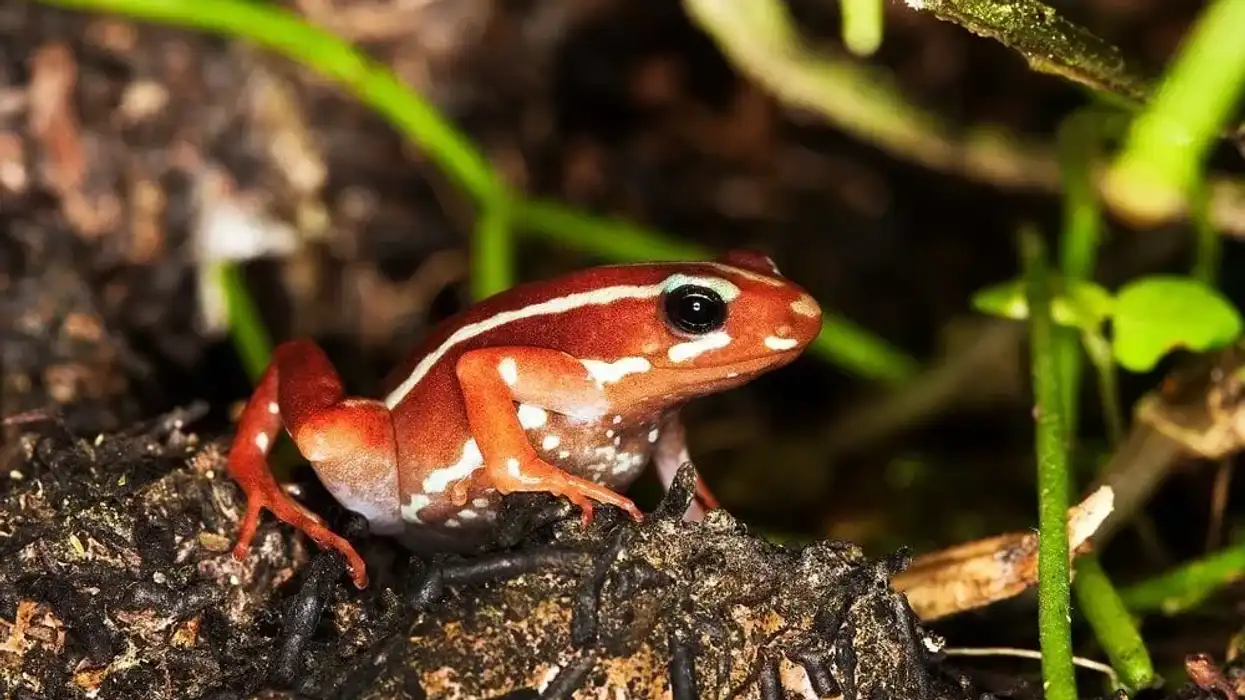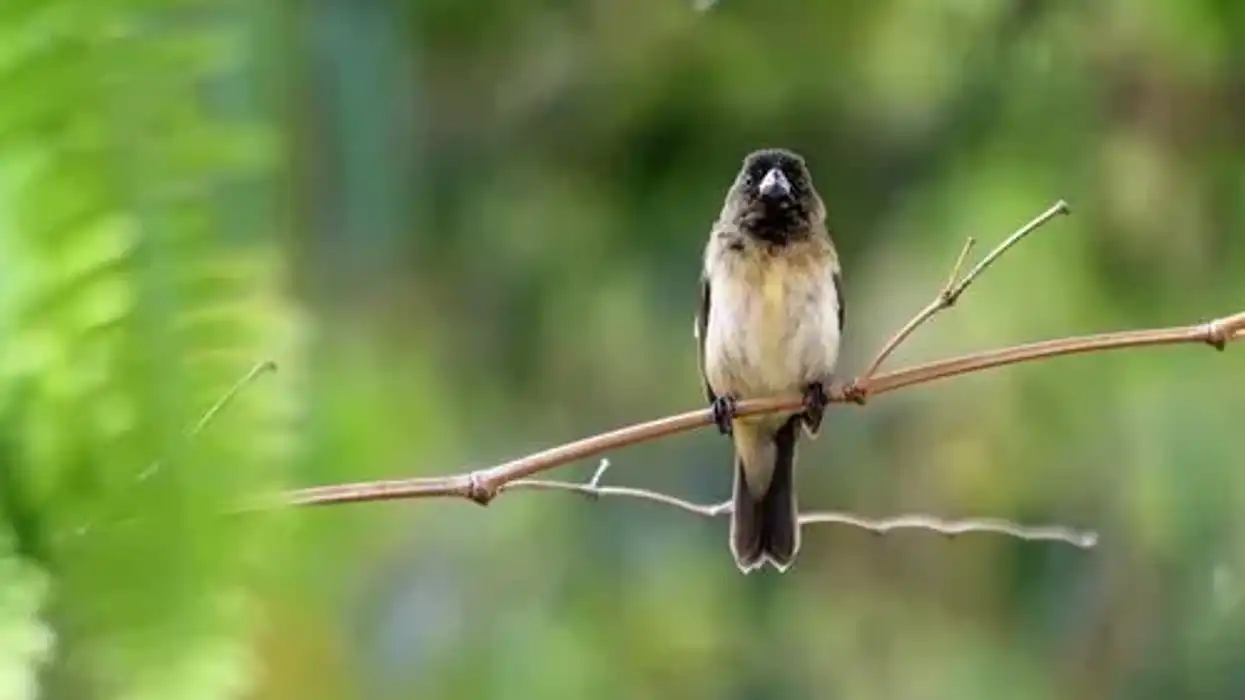Candy-striped leafhopper (Graphocephala coccinea) is a species of insect found in Central and North America. They go by many names like red and blue leafhopper, scarlet and green leafhopper, and red-banded leafhopper.
This bug is usually found in woodlands, meadows, and gardens where plants are abundant. Their preferences lean towards blueberry, grapes, elm, oak, roses, and other ornamental plant leaves. They tend to stab the plan leaf and suck in nutrients and cause major discoloration.
If they take in sap from a plant infected with pierce's disease, they can easily carry this disease onto other plants. Because of this, they are considered to be a major garden pest.
The body of candy-striped leafhoppers is very eye-catchy. They have bright blue-red diagonal stripes with a yellow head, legs, and abdomen.
You can easily identify them, although catching them is a totally different matter. Read on to know some interesting facts about this bug and how to keep your garden safe from it. If you liked it, you could also check out the panda ant and the slipper lobster.
Candy-Striped Leafhopper Interesting Facts
What type of animal is a candy-striped leafhopper?
The candy-striped leafhopper (Graphocephala coccinea) is a species of leafhopper or insect that is only found in North and Central America.
What class of animal does a candy-striped leafhopper belong to?
The candy-striped leafhopper belongs to the class of Insecta from the Graphocephala genus of the Cicadellinae family. Their scientific name is Graphocephala coccinea.
How many candy-striped leafhoppers are there in the world?
The total population of candy-striped leafhoppers is unknown.
Where does a candy-striped leafhopper live?
The candy-striped leafhopper generally lives in woodlands or meadows of north or Central America. Their range goes from Canada to Panama.
What is a candy-striped leafhopper's habitat?
The habitat of candy leafhoppers is usually woodlands, gardens, or meadows. They can be found near blackberry bushes and ornamental plants. The candy-striped leafhopper nymph usually lives on plant leaves.
Who do candy-striped leafhoppers live with?
The candy-striped leafhopper is usually a solitary animal that mostly moves alone. It can be seen together only during the breeding season.
How long does a candy-striped leafhopper live?
Candy-striped leafhoppers live a very short life and can have a maximum lifespan of 30-40 days.
How do they reproduce?
A female red and blue leafhopper is oviparous, which means they lay eggs after mating. They do not have a set breeding season as the female skin die after 30 days of being born.
Female leafhoppers lay about up to six eggs daily on plant leaves. These nymphs can hatch on leaves in around 10 days in spring and become adults in 10 to 14 days. Candy-striped leafhopper's hatched eggs undergo five instars, after which they can finally transition into an adult.
What is their conservation status?
The conservation status of candy-striped leafhoppers is Not Listed, which means that their population size is unknown.
Candy-Striped Leafhopper Fun Facts
What do candy-striped leafhoppers look like?

The candy-striped leafhoppers have a bold color in a combination of red and blue. These bright colors are arranged as a diagonal or vertical stripe on their body. They also have a bright yellow head, legs, and abdomen.
The eyes of this species are usually bigger than the stomach. They have four front legs and two hind legs. The young nymphs are wingless and gradually grow as they age.
How cute are they?
The pattern on the body of candy-striped leafhoppers gives them a very interesting appearance. Because of their color combinations, they have been given a lot of names like red and blue leafhopper. Red-banded leafhoppers look very innocent or cute but can actually be very harmful to the health of plants and are considered a pest in gardens.
How do they communicate?
Leafhoppers are known to communicate using vibration that is carried on by the plants they land on. These vibratory signs receive a reply from the other leafhopper, and this forms a kind of duet between the pair.
How big is a candy-striped leafhopper?
The length of a scarlet and green leafhopper is 0.27-0.39 in ( 7-10 mm ). Adults can be about eight times the size of a small ladybird.
How fast can a candy-striped leafhopper fly?
There are no studies that have estimated the speed at which a candy-striped leafhopper can fly.
How much does a candy-striped leafhopper weigh?
The weight of a candy-stripped leafhopper is mostly negligible.
What are the male and female names of the species?
There are no names for the males and females leafhoppers.
What would you call a baby candy-striped leafhopper?
A candy-striped baby leafhopper is known as a nymph.
What do they eat?
Candy-striped leafhopper feeds on juices of plant leaves and tender stems. These insects especially feed on blackberry bushes and ornamental plants like roses.
This species can also feed on plants of grape, elm, oak, and other woody ornamental plants. The red-banded leafhopper has a sharp, piercing mouth organ under the chin which allows them to stab the plant leaf and suck out all the nutrients.
After they have finished feeding on the plant, the excess sap comes out in the form of honeydew and is sweet enough to attract wasps. This honeydew is sprayed within audible pop and gives them the name of a sharpshooter.
While they are mostly herbivorous, these leafhoppers can also feed on insects like spiders, wasps, and ladybugs. The main predators of this species are birds or insects like assassin bugs, lady beetles, green lacewing, and praying mantis.
Are they dangerous?
Candy-striped leafhoppers are not dangerous to human beings, do not bite and often jump away when you get too close. However, it can be very dangerous to plants.
The candy-striped leafhopper can damage the plant tissues when feeding on leaves to suck out the nutrients. This species can spread or transfer a lot of diseases (like pierce's disease) to plants from other plants.
The bacteria transmitted can lead to discoloration in plant leaves as well as affect the productivity of grapes, peaches, or plums. The honeydew secreted attract wasps or flies and can promote bacterial growth.
Would they make a good pet?
The candy-stride leafhopper species would not make a good pet as they are usually a pest to gardens. They can transmit diseases from plant to plant and lead to discoloration or premature wilting.
Did you know...
When startled, some leafhoppers can jump up to 40 times the size of their own body, making them one of the best jumpers in the animal world.
How to get rid of candy-striped leafhoppers?
The best way to know if your garden is infested with candy-striped leafhopper is to go scouting for them in the garden. Plants that have been targeted by this insect often have brown or pale white discoloration.
If you see some candy-striped leafhopper damage on your plant leaves, you can use organic pesticides or insecticides that can be sprayed directly on the leafhoppers.
You can also put a layer of insecticide soap on the surface of the plants, and although it is safe, it needs to be removed later. Insects that hunt leafhoppers like lacewings, ladybugs, parasitic wasps, and beetles can also be introduced to the garden.
Are leafhoppers harmful to humans?
While they are not directly harmful to human beings, the red-banded leafhopper is a garden pest. They can greatly affect the health of plants and reduce the productivity of many fruit plants. This can often lead to economic loss, which directly affects humans.
Here at Kidadl, we have carefully created lots of interesting family-friendly animal facts for everyone to discover! Learn more about some other arthropods from our American house spider facts and darkling beetle facts pages.
You can even occupy yourself at home by coloring in one of our free printable Candy-Striped Leafhopper coloring pages.









